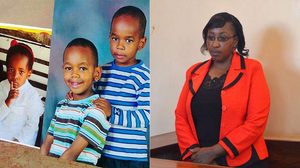
Supporting a Loved One: A 3-Step Guide for Families
Reading Time: 2min
When someone in your family is struggling with their mental health, it affects everyone. You want to help, but it's hard to know where to start. The good news is that you don't need special training to make a real difference. Here are three practical steps your family can take to create a supportive environment.
Step 1: Learn to Recognize the Signs
The first step is understanding what you're seeing. Mental health struggles often show up as changes in behavior. Maybe your once-talkative teen now stays locked in their room. Perhaps your usually reliable sibling keeps missing family gatherings. Or maybe your parent seems more irritable or withdrawn than usual.
These changes might include:
Sleeping too much or too little
Losing interest in activities they used to enjoy
Significant changes in appetite or weight
Difficulty concentrating or making decisions
Talking about feeling hopeless or worthless
Remember - you're not looking for one bad day, but patterns that last for several weeks. The goal isn't to diagnose, but to notice when something seems consistently different.
Step 2: Start the Conversation with Care
Approaching someone about mental health can feel scary, but how you begin matters tremendously. Choose a quiet time when you won't be interrupted, and speak from a place of concern rather than criticism.
Try starting with:
"I've noticed you've seemed really tired lately, and I'm concerned about you"
"You haven't been yourself these past few weeks - want to talk about it?"
"I care about you, and I'm wondering how you're really doing"
Then listen - really listen - without interrupting or rushing to solutions. You might hear things that are hard to sit with, but your quiet presence can be more powerful than any advice. Avoid saying "just cheer up" or "snap out of it." Instead, validate their experience with simple phrases like "That sounds really difficult" or "Thank you for trusting me with this."
Step 3: Create a Supportive Home Environment
Recovery happens best in an environment that feels safe and supportive. As a family, you can work together to create this space.
Small changes that make a big difference:
Establish routines: Regular family meals or weekly check-ins provide stability
Practice patience: There will be good days and bad days - try not to take mood swings personally
Share responsibilities: Lighten their load by helping with chores without being asked
Include them: Keep inviting them to family activities, even if they often decline
Take care of yourselves: Supporting someone is demanding work - make sure family members get breaks too
When to Seek Additional Help
While family support is crucial, sometimes professional help is needed. If your loved one's struggles are affecting their ability to function daily, or if they talk about self-harm, it's time to involve a professional. You can say, "I found some information about a counselor who seems really good - would you be willing to just look at their website with me?"
Remember that supporting a family member with mental health challenges is a marathon, not a sprint. There will be difficult moments and setbacks, but your consistent, compassionate presence matters more than you know. By working together as a family, you can create the foundation for healing and recovery.









